Posted on June 5th, 2011 by ASEE
 Two Houston engineers have won a competition for low-cost experiments that high school students could send aboard a suborbital space flight. They have designed an inexpensive microgravity spaceflight kit that allows students to conduct three experiments demonstrating important principles of science and engineering.
Two Houston engineers have won a competition for low-cost experiments that high school students could send aboard a suborbital space flight. They have designed an inexpensive microgravity spaceflight kit that allows students to conduct three experiments demonstrating important principles of science and engineering.
Read More
Filed under: K-12 Education News | Comments Off on DIY Space-flight Experiments for High Schoolers
Tags: Aeronautics, Aerospace, Aerospace Engineering, Competition, Competitions for Students, NASA, Physics, Space
Posted on May 22nd, 2011 by Mary Lord
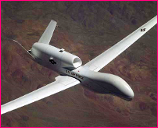 Ever since the Wright brothers ushered in the aerospace era a century ago, America has ruled the skies. Now, a unique Arizona industry and education partnership aims to lift the country’s future aviation expertise by building a seamless high-school-to-career STEM pipeline focused on off-board pilot technology and autonomous flight.
Ever since the Wright brothers ushered in the aerospace era a century ago, America has ruled the skies. Now, a unique Arizona industry and education partnership aims to lift the country’s future aviation expertise by building a seamless high-school-to-career STEM pipeline focused on off-board pilot technology and autonomous flight.
Read More
Filed under: K-12 Education News | Comments Off on “Innovation Campus” Links K-12, Colleges & Industry
Tags: Aerospace, Curriculum
Posted on March 27th, 2011 by ASEE
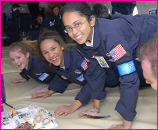 Many kids dream of exploring space, but few get much further than their schoolyards. This is not true of students in Tekna-Theos, a Florida after-school program bursting with science activities and contests. They’ve set their sights high, designing and building mini-satellites and preparing a payload to test the effect of weightlessness on bone cells. Some have actually experienced “Zero-G.”
Many kids dream of exploring space, but few get much further than their schoolyards. This is not true of students in Tekna-Theos, a Florida after-school program bursting with science activities and contests. They’ve set their sights high, designing and building mini-satellites and preparing a payload to test the effect of weightlessness on bone cells. Some have actually experienced “Zero-G.”
Read More
Filed under: Special Features | 3 Comments »
Tags: Aeronautics, Aerospace, Aerospace Engineering, Biomolecular Engineering, CubeSat, NASA, Satellite, Satellite imagery, Satellites, Space, Teachers
Posted on March 27th, 2011 by Mary Lord
 It’s easy to find your way to school. Now imagine trying to navigate the skies, with no signs to point you in the right direction. How do pilots find their way? These “pilot training lessons” developed by the Center for Innovation in Engineering and Science Education at the Stevens Institute of Technology will teach your young aviators the principles of navigation in a fun series of real-time activities.
It’s easy to find your way to school. Now imagine trying to navigate the skies, with no signs to point you in the right direction. How do pilots find their way? These “pilot training lessons” developed by the Center for Innovation in Engineering and Science Education at the Stevens Institute of Technology will teach your young aviators the principles of navigation in a fun series of real-time activities.
Read More
Filed under: Class Activities, Grades 6-8, Grades 6-8, Grades 9-12, Grades K-5, Lesson Plans, Web Resources | 2 Comments »
Tags: Aeronautics, Aerospace, airplane, Class Activities, flight, Grades 6-8, Lesson Plan, Mathematics, NASA, Physics, vectors, windspeed
Posted on March 25th, 2011 by Mary Lord
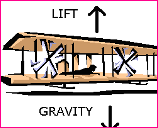 In this lesson, you’ll introduce your students to the four forces of flight — drag, lift, thrust, and weight — through a variety of fun flight experiments. Students will “fly” for short periods and then evaluate factors that might either increase or decrease their “flight” duration. They also will discover how air moving at different speeds over a wing keeps planes aloft.
In this lesson, you’ll introduce your students to the four forces of flight — drag, lift, thrust, and weight — through a variety of fun flight experiments. Students will “fly” for short periods and then evaluate factors that might either increase or decrease their “flight” duration. They also will discover how air moving at different speeds over a wing keeps planes aloft.
Read More
Filed under: Grades 6-8, Grades 9-12, Lesson Plans | 1 Comment »
Tags: Aerodynamics, Aeronautics, Aerospace, Lesson Plan, Lesson Plans
Posted on March 23rd, 2011 by Mary Lord
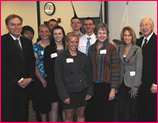 Skyline High School in Boulder, Colo., showed Interior Secretary Ken Salazar what a high quality program looks like when he visited the STEM Academy March 21. Students must earn 28 credits for a STEM certificate, instead of the 24.5 needed for a regular high school diploma, and maintain at least a 2.5 GPA. Graduates are guaranteed acceptance in the University of Colorado’s engineering program.
Skyline High School in Boulder, Colo., showed Interior Secretary Ken Salazar what a high quality program looks like when he visited the STEM Academy March 21. Students must earn 28 credits for a STEM certificate, instead of the 24.5 needed for a regular high school diploma, and maintain at least a 2.5 GPA. Graduates are guaranteed acceptance in the University of Colorado’s engineering program.
Read More
Filed under: K-12 Education News | 2 Comments »
Tags: Aerospace, Education Policy, Science
Posted on February 10th, 2011 by ASEE
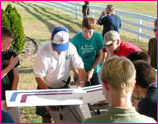 Illinois Aerospace Institute summer camp – IAI is a one-week residential program, July 17-23, 2011, for students grades 9-12 interested in aerospace engineering and aviation, held on the campus of the University of Illinois At Urbana-Champaign. Students learn about a variety of topics relating to aerospace engineering through classroom sessions, laboratories, demonstrations, and hands-on activities. Cost.$700. Application Deadline: April 15.
Illinois Aerospace Institute summer camp – IAI is a one-week residential program, July 17-23, 2011, for students grades 9-12 interested in aerospace engineering and aviation, held on the campus of the University of Illinois At Urbana-Champaign. Students learn about a variety of topics relating to aerospace engineering through classroom sessions, laboratories, demonstrations, and hands-on activities. Cost.$700. Application Deadline: April 15.
Read More
Filed under: Grades 9-12, K-12 Outreach Programs | Comments Off on Students’ Summer: Aerospace at U. Illinois Urbana-Champaign
Tags: Aerospace, Aerospace Engineering, Aviation, Summer Camps & Programs (Students), Summer Programs (Students)
Posted on February 10th, 2011 by ASEE
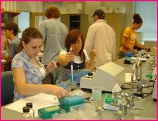 Project SMART (Science and Mathematics Achievement through Research Training) is a 4-week Summer Institute at the University of New Hampshire, July 5-29, 2011, for talented high school students in grades 10 and 11. It challenges, educates, and motivates students in science and mathematics while acquainting them with the environment and resources of the University as a place for higher education and research. Cost: $3,000 for full four weeks, $2,500 without weekend stays.Applications accepted until all places are filled.
Project SMART (Science and Mathematics Achievement through Research Training) is a 4-week Summer Institute at the University of New Hampshire, July 5-29, 2011, for talented high school students in grades 10 and 11. It challenges, educates, and motivates students in science and mathematics while acquainting them with the environment and resources of the University as a place for higher education and research. Cost: $3,000 for full four weeks, $2,500 without weekend stays.Applications accepted until all places are filled.
Read More
Filed under: Grades 9-12, K-12 Outreach Programs | Comments Off on Students’ Summer: Science and Math in New Hampshire. July 5-29, 2010.
Tags: Aerospace, Biotechnology, Computer Science, Environmental science, Grades 10 and 11, Marine Science, Mathematics, Nanotechnology, Science, Summer Camps & Programs (Students), Summer Programs (Students)
Posted on January 30th, 2011 by Jaimie Schock
 Twenty five years ago, on January 28, Americans watched in horror as the space shuttle Challenger exploded, barely a minute after takeoff, killing all seven crew members. Schools nationwide still honor the memory of Christa McAuliffe, a New Hampshire high school social studies teacher who was aboard the ill-fated flight that morning as NASA’s first Teacher in Space Project participant.
Twenty five years ago, on January 28, Americans watched in horror as the space shuttle Challenger exploded, barely a minute after takeoff, killing all seven crew members. Schools nationwide still honor the memory of Christa McAuliffe, a New Hampshire high school social studies teacher who was aboard the ill-fated flight that morning as NASA’s first Teacher in Space Project participant.
Read More
Filed under: K-12 Education News | Comments Off on Learning from the Challenger Tragedy
Tags: Aeronautics, Aerospace, Events, History, NASA
 Two Houston engineers have won a competition for low-cost experiments that high school students could send aboard a suborbital space flight. They have designed an inexpensive microgravity spaceflight kit that allows students to conduct three experiments demonstrating important principles of science and engineering.
Two Houston engineers have won a competition for low-cost experiments that high school students could send aboard a suborbital space flight. They have designed an inexpensive microgravity spaceflight kit that allows students to conduct three experiments demonstrating important principles of science and engineering.








 Ever since the Wright brothers ushered in the aerospace era a century ago, America has ruled the skies. Now, a unique Arizona industry and education partnership aims to lift the country’s future aviation expertise by building a seamless high-school-to-career STEM pipeline focused on off-board pilot technology and autonomous flight.
Ever since the Wright brothers ushered in the aerospace era a century ago, America has ruled the skies. Now, a unique Arizona industry and education partnership aims to lift the country’s future aviation expertise by building a seamless high-school-to-career STEM pipeline focused on off-board pilot technology and autonomous flight. Many kids dream of exploring space, but few get much further than their schoolyards. This is not true of students in Tekna-Theos, a Florida after-school program bursting with science activities and contests. They’ve set their sights high, designing and building mini-satellites and preparing a payload to test the effect of weightlessness on bone cells. Some have actually experienced “Zero-G.”
Many kids dream of exploring space, but few get much further than their schoolyards. This is not true of students in Tekna-Theos, a Florida after-school program bursting with science activities and contests. They’ve set their sights high, designing and building mini-satellites and preparing a payload to test the effect of weightlessness on bone cells. Some have actually experienced “Zero-G.” It’s easy to find your way to school. Now imagine trying to navigate the skies, with no signs to point you in the right direction. How do pilots find their way? These “pilot training lessons” developed by the Center for Innovation in Engineering and Science Education at the Stevens Institute of Technology will teach your young aviators the principles of navigation in a fun series of real-time activities.
It’s easy to find your way to school. Now imagine trying to navigate the skies, with no signs to point you in the right direction. How do pilots find their way? These “pilot training lessons” developed by the Center for Innovation in Engineering and Science Education at the Stevens Institute of Technology will teach your young aviators the principles of navigation in a fun series of real-time activities. In this lesson, you’ll introduce your students to the four forces of flight — drag, lift, thrust, and weight — through a variety of fun flight experiments. Students will “fly” for short periods and then evaluate factors that might either increase or decrease their “flight” duration. They also will discover how air moving at different speeds over a wing keeps planes aloft.
In this lesson, you’ll introduce your students to the four forces of flight — drag, lift, thrust, and weight — through a variety of fun flight experiments. Students will “fly” for short periods and then evaluate factors that might either increase or decrease their “flight” duration. They also will discover how air moving at different speeds over a wing keeps planes aloft. Skyline High School in Boulder, Colo., showed Interior Secretary Ken Salazar what a high quality program looks like when he visited the STEM Academy March 21. Students must earn 28 credits for a STEM certificate, instead of the 24.5 needed for a regular high school diploma, and maintain at least a 2.5 GPA. Graduates are guaranteed acceptance in the University of Colorado’s engineering program.
Skyline High School in Boulder, Colo., showed Interior Secretary Ken Salazar what a high quality program looks like when he visited the STEM Academy March 21. Students must earn 28 credits for a STEM certificate, instead of the 24.5 needed for a regular high school diploma, and maintain at least a 2.5 GPA. Graduates are guaranteed acceptance in the University of Colorado’s engineering program. Illinois Aerospace Institute summer camp – IAI is a one-week residential program, July 17-23, 2011, for students grades 9-12 interested in aerospace engineering and aviation, held on the campus of the University of Illinois At Urbana-Champaign. Students learn about a variety of topics relating to aerospace engineering through classroom sessions, laboratories, demonstrations, and hands-on activities. Cost.$700. Application Deadline: April 15.
Illinois Aerospace Institute summer camp – IAI is a one-week residential program, July 17-23, 2011, for students grades 9-12 interested in aerospace engineering and aviation, held on the campus of the University of Illinois At Urbana-Champaign. Students learn about a variety of topics relating to aerospace engineering through classroom sessions, laboratories, demonstrations, and hands-on activities. Cost.$700. Application Deadline: April 15. Project SMART (Science and Mathematics Achievement through Research Training) is a 4-week Summer Institute at the University of New Hampshire, July 5-29, 2011, for talented high school students in grades 10 and 11. It challenges, educates, and motivates students in science and mathematics while acquainting them with the environment and resources of the University as a place for higher education and research. Cost: $3,000 for full four weeks, $2,500 without weekend stays.Applications accepted until all places are filled.
Project SMART (Science and Mathematics Achievement through Research Training) is a 4-week Summer Institute at the University of New Hampshire, July 5-29, 2011, for talented high school students in grades 10 and 11. It challenges, educates, and motivates students in science and mathematics while acquainting them with the environment and resources of the University as a place for higher education and research. Cost: $3,000 for full four weeks, $2,500 without weekend stays.Applications accepted until all places are filled. Twenty five years ago, on January 28, Americans watched in horror as the space shuttle Challenger exploded, barely a minute after takeoff, killing all seven crew members. Schools nationwide still honor the memory of Christa McAuliffe, a New Hampshire high school social studies teacher who was aboard the ill-fated flight that morning as NASA’s first Teacher in Space Project participant.
Twenty five years ago, on January 28, Americans watched in horror as the space shuttle Challenger exploded, barely a minute after takeoff, killing all seven crew members. Schools nationwide still honor the memory of Christa McAuliffe, a New Hampshire high school social studies teacher who was aboard the ill-fated flight that morning as NASA’s first Teacher in Space Project participant.